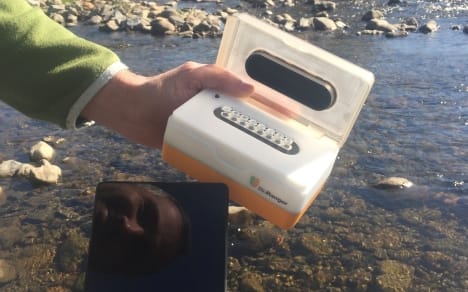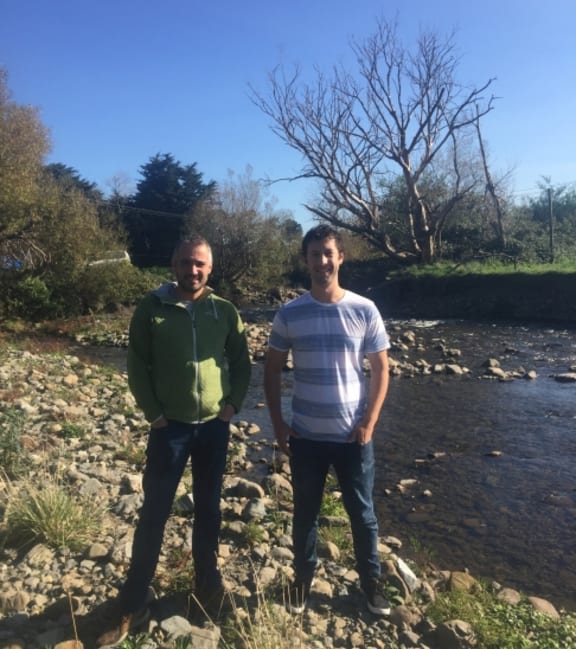The latest DNA technology, based on techniques used in forensic science, is being adapted to detect spawning trout in Manawatu rivers - think CSI, but for fish.

Measuring eDNA with the BioRanger device Photo: Simon Morton/RNZ
Mature trout return each year to the place they were born to reproduce.
If a stream used by fish to spawn gets polluted or damaged, future generations of fish in that area are under threat.

Dr Adam Canning and Dr Richard Winkworth on the banks of the Manawatu River Photo: Simon Morton/RNZ
The BioRanger device scans for environmental DNA - genetic traces in air, soil or water – which are then used to precisely identify any living species present, whether that's myrtle rust, shark, or, in this case, procreating trout.
Wellington Fish and Game Council locates breeding habitats in order to protect them.
“We walk up and down the side of the river trying to find what is called a red, says Dr Adam Canning, research scientist at Wellington Fish and Game Council.
“A red is patch within the river a trout has made with its tail, and that’s where they lay their eggs.”
But these breeding habitats can be difficult to spot, especially in muddy water, and there's 4200km of river catchment in the region.
Dr Richard Winkworth, from Massey University, says using environmental DNA testing for the presence of fish is a bit like the TV show CSI.
“Police officers are going into a crime scene and they’re looking for traces of evidence that a particular person has been present."
People will leave a trace of DNA on things they touch, in a little piece of hair or skin, he says. “It’s exactly the same for a fish.”

